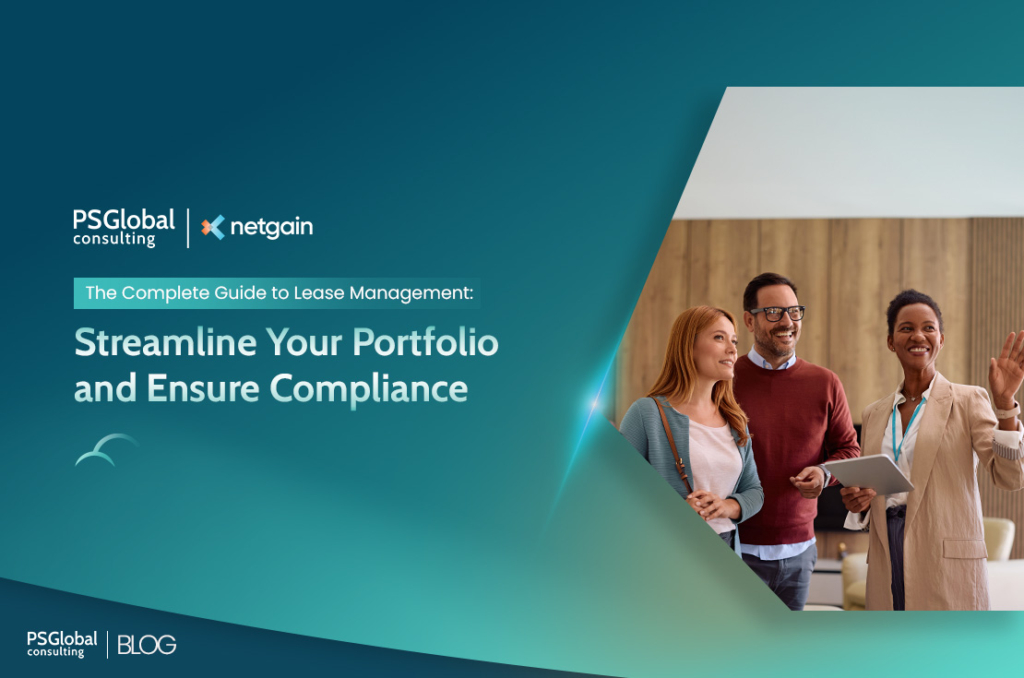Introduction
Definition of Lease Management
Lease management represents the systematic approach organisations use to oversee their entire lease portfolio throughout each agreement’s lifecycle. This discipline involves tracking lease terms, monitoring lease obligations, maintaining accurate lease data, and ensuring compliance with accounting standards. Whether handling real estate leases or equipment leases, effective lease management requires meticulous attention to lease details and proactive administration.
Importance of Effective Lease Management
Organisations responsible for lease portfolios face mounting pressure to maintain accuracy while meeting financial reporting requirements. Poor administration leads to missed opportunities, overpayments, and contractual obligations that go unnoticed until problems arise.
Strong lease administration protects the balance sheet, reduces risk, and helps teams make informed decisions about their portfolio. Companies that manage lease agreements effectively avoid common pitfalls like untracked rent payments, forgotten renewal deadlines, and compliance failures that trigger audit issues.
Overview of Lease Management Tasks
Day-to-day lease management encompasses diverse responsibilities. Lease administrators handle tasks related to paying invoices, updating lease information, tracking CAM charges (common area maintenance), and monitoring co-tenancy clauses.
Teams must calculate lease payments, maintain an audit trail, and prepare financial disclosures. Common tasks include lease abstraction, recording journal entries, managing relationships with landlords and lessors, and ensuring every lease meets financial reporting standards. The lease management process starts with capturing key lease terms and extends through termination.
Key Components of Lease Management
Lease Agreements and Lease Terms
Every lease agreement contains specific provisions that dictate the relationship between lessee and lessor. Key lease terms include payment schedules, renewal options, termination clauses, and agreed-upon responsibilities.
Real estate leases often contain complex provisions regarding operating expenses, while equipment leases may include purchase options. Understanding each piece of equipment or property under agreement helps administrators track obligations accurately.
Lease Portfolio and Lease Classifications
A comprehensive lease portfolio includes all agreements an organisation holds. Lease classifications divide these into operating leases and finance leases based on accounting standards.
Operating leases typically cover shorter terms without ownership transfer, while finance leases represent long-term commitments where the lessee essentially purchases the asset. Proper classification affects how agreements appear on the balance sheet and influences financial reporting requirements.
Lease Data and Lease Information
Accurate lease data forms the foundation of effective administration. Critical lease information includes payment amounts, escalation schedules, square footage, landlord contact details, insurance requirements, and maintenance responsibilities.
Lease-related data must remain current to support decision-making. Organisations need a central repository where teams can access lease details without searching through Excel spreadsheets or paper files.
Compliance with Accounting Standards (ASC 842, IFRS 16, GASB 87)
New lease accounting standards transformed how organisations report agreements. ASC 842 took effect for public companies, replacing previous guidance and requiring most leases to appear on the balance sheet. IFRS 16 established similar requirements for international organisations. GASB 87 governs governmental entities.
These accounting standards from FASB and other bodies mandate recognition of right-of-use (ROU) assets and lease obligations. Compliance with lease accounting standards demands rigorous tracking and reporting capabilities.
Lease Management Process
Initial Lease Setup
The lease management process starts with thorough documentation when acquiring a new lease. Administrators must capture every relevant detail, from base rent to CAM charges.
Setting up operating leases and finance leases requires understanding classification criteria and establishing proper accounting treatment. Initial setup includes lease abstraction, where teams input key lease terms from lengthy agreements into tracking systems. This foundation enables accurate ongoing administration.
Day-to-Day Lease Management Tasks
Regular lease management tasks keep portfolios running smoothly. Administrators handle rent payments, track escalations, maintain tenant relationships, and respond to landlord requests.
Day-to-day activities include monitoring compliance with lease terms, processing invoices, and updating lease records when circumstances change. Teams must stay alert to approaching deadlines and potential issues that could affect the portfolio.
Lease Abstraction and Updating Lease Details
Lease abstraction involves extracting essential information from complex agreements and summarising it in accessible formats. A well-crafted lease abstract highlights critical dates, payment terms, renewal provisions, and special clauses.
Updating lease details ensures accuracy as circumstances change. Amendments, rent adjustments, and modifications all require prompt updates to maintain a single source of truth.
Renewal and Termination Processes
Renewal decisions significantly impact portfolio strategy. Administrators must track renewal deadlines, evaluate options, and negotiate terms with landlords or lessors.
Missing a renewal window can force automatic extensions or unwanted terminations. Similarly, the termination process demands attention to notice requirements, return conditions, and final obligations. Proper management of these transitions prevents missed opportunities and reduces risk.
Lease Accounting and Financial Reporting
Lease Accounting Standards Overview
Modern lease accounting standards require organisations to recognise most leases on their balance sheets. The shift from off-balance-sheet treatment to capitalisation changed how companies present their financial position. Understanding lease classifications helps determine proper accounting treatment. Organisations must calculate present values, determine discount rates, and establish appropriate measurement approaches for each agreement in their portfolio.
Journal Entries and Balance Sheet Implications
Recording lease transactions requires specific journal entries that reflect both the right-of-use asset and the corresponding obligation. Initial entries establish the ROU asset and liability. Subsequent entries record lease payments, amortisation of the ROU asset, and interest expense on the obligation. These entries directly affect the balance sheet, income, and cash flow statements. Proper execution ensures accurate financial reporting and meets audit requirements.
Reporting Capabilities for Lease-Related Financials
Organisations need robust reporting capabilities to meet financial disclosure requirements. Reports must show lease expenses, future payment obligations, remaining terms, and portfolio composition.
Financial reporting includes footnote disclosures that explain lease policies, classification decisions, and material terms. Teams must generate reports for internal stakeholders and external auditors. Strong reporting tools help organisations meet financial standards efficiently.
Audit Trails and Compliance Audits
An audit trail documents every action taken within the lease management system. This transparency proves invaluable during compliance audits when auditors scrutinise lease accounting practices. Complete audit trails show who made changes, when modifications occurred, and what triggered adjustments.
Organisations can demonstrate compliance with lease accounting standards by maintaining detailed records. Proper documentation protects against audit findings and regulatory concerns.
Role of Lease Management Software
Purpose-Built Lease Management System
Purpose-built lease management software addresses the unique challenges of administering complex portfolios. Unlike generic tools or Excel spreadsheets, specialised systems understand lease terminology, accounting requirements, and common workflows.
The right software accommodates both real estate leases and equipment leases. These platforms help teams manage lease agreements from inception through termination.
Centralising Lease Information
A lease management system is a central repository where teams centralise all lease data. Users access a single source of truth rather than searching multiple locations for key lease information.
Centralising lease details eliminates confusion, prevents errors, and ensures everyone works from current information. Teams can quickly locate lease terms, payment schedules, and landlord contacts without delay.
Automating Lease Management Tasks
Automation transforms lease administration by reducing manual effort and eliminating errors. Software can automate tasks like calculating lease payments, generating journal entries, and creating financial disclosures.
Automated alerts notify administrators about approaching renewal dates, payment deadlines, and compliance requirements. Automation includes calculating complex provisions like percentage rent, CAM reconciliations, and escalations. By letting technology handle routine tasks, teams focus on strategic decisions.
Benefits of Using the Right Software
Organisations that invest in the right software significantly reduce administrative burden while improving accuracy. Benefits include enhanced compliance with lease accounting standards like ASC 842 and IFRS 16, better visibility into the portfolio, and enhanced decision-making capabilities.
Software provides dashboard views that summarise portfolio health and highlight areas needing attention. Teams can optimise their portfolio, identify savings opportunities, and reduce risk. Technology enables organisations to manage lease obligations proactively rather than reactively.
How Netgain Can Help with Lease Management
Overview of Netgain’s Lease Management Solutions
Netgain delivers comprehensive lease management solutions designed for organisations seeking to optimise their lease administration. The platform addresses the full spectrum of lease management requirements, from initial setup through financial reporting. Netgain understands that organisations need more than basic tracking—they require sophisticated tools that handle complex accounting standards and support strategic portfolio decisions.
Features That Optimise Lease Administration
Netgain’s platform includes features like automated calculations, workflow management, and integrated approval processes. The system handles both operating leases and finance leases, accommodating diverse portfolio needs.
Netgain’s built-in intelligence helps teams classify agreements correctly, calculate ROU assets and obligations, and generate required journal entries. Users benefit from customisable workflows that match their specific lease management process.
Centralising Lease Data for a Single Source of Truth
Netgain creates a central repository where organisations centralise all lease information. Every lease detail, from tenant data to equipment specifications, resides in one accessible location.
This single source of truth eliminates discrepancies and ensures accuracy across the organisation. Teams no longer waste time reconciling conflicting information from Excel spreadsheets or multiple databases. Stakeholders access consistent, reliable lease data whenever needed.
Enhancing Compliance and Reporting Capabilities
Netgain strengthens compliance with lease accounting standards, including ASC 842, IFRS 16, and GASB 87. The platform maintains comprehensive audit trails that document every transaction and change.
Reporting capabilities deliver the financial disclosures and analytics organisations need for both internal management and external audits. Private and public companies benefit from built-in compliance features that reduce the burden of meeting accounting standards.
Support for Lease Obligations and Lease Management Process
Netgain supports the entire lease management process, from capturing new lease agreements to managing renewals and terminations. The platform tracks lease obligations, monitors payment schedules, and alerts administrators to critical deadlines.
Netgain frees teams to focus on strategic initiatives by automating routine lease management tasks. Organisations can optimise their portfolio, negotiate better terms with landlords, and make informed decisions backed by a complete, accurate inventory of their lease-related commitments.
In a Nutshell
Recap of Lease Management Importance
Effective lease management protects organisational interests by ensuring compliance, optimising costs, and maintaining accurate financial reporting. The discipline touches every aspect of portfolio administration, from tracking contractual obligations to managing relationships with tenants and landlords.
Organisations prioritising strong lease administration avoid missed opportunities, reduce risk, and maintain healthy balance sheets. Given the complexity of modern accounting standards like 842 and IFRS 16, proper management has become non-negotiable.
Final Thoughts on Choosing a Lease Management Solution
Selecting the right lease management system is a critical decision affecting operational efficiency and financial accuracy. Organisations should look for in lease management software the capabilities to automate complex calculations, centralise information, and support compliance with accounting standards.
Purpose-built solutions designed specifically for lease administration deliver far better results than generic tools or manual processes.
The guide to lease success begins with recognising that proper software investment pays dividends through reduced errors, improved compliance, and strategic portfolio optimisation. Organisations that keep your lease data current and accessible position themselves for long-term success in an increasingly complex regulatory environment.



